Learn how to build a decentralized blog on JioSphere Browser using Polygon blockchain with this step-by-step guide. Create, deploy, and manage your content securely.
I’m excited to show you how to start a decentralized blog. We’ll use JioSphere Browser and Polygon blockchain. This new way of creating digital content is changing the game. It gives content creators in India and worldwide more freedom and security.
A decentralized blog is more than just a place to publish. It lets you share your ideas freely, without anyone controlling you. With JioSphere Browser and Polygon blockchain, you’ll have a safe and open space for your content.
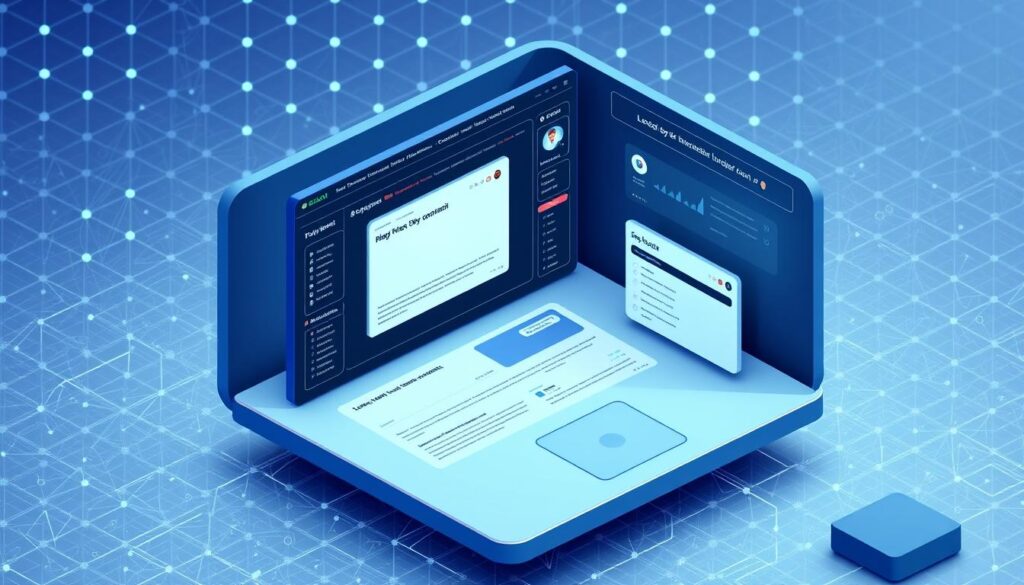
In this guide, we’ll cover everything you need to know. We’ll talk about the technical basics, how to develop your blog, and the latest Web3 tech. This will help you understand how to start your decentralized blog.
Key Takeaways
- Understand the fundamentals of decentralized blogging
- Learn how Polygon blockchain enhances content security
- Discover JioSphere Browser’s unique Web3 capabilities
- Create a censorship-resistant publishing platform
- Explore cutting-edge blockchain technology for content creators
Understanding JioSphere Browser and Polygon Integration
Exploring Web3 technologies opens up exciting possibilities. The JioSphere browser is a groundbreaking approach to blockchain integration. It offers developers and users a seamless entry into the decentralized ecosystem.

At the heart of this innovation is a sophisticated blockchain architecture. It changes how we interact with digital platforms. The Polygon network provides the essential infrastructure for these advanced capabilities.
Blockchain Architecture Fundamentals
Understanding blockchain technology means knowing its key components.
The decentralized nature of this system ensures:
- Transparent and secure data storage
- Immutable transaction records
- Distributed consensus mechanisms
JioSphere’s Web3 Capabilities
JioSphere’s Web3 technologies offer remarkable features.
The browser provides:
- Seamless blockchain wallet integration
- Direct support for decentralized applications
- Enhanced privacy and security protocols
Polygon Network Features
The Polygon network is a powerful blockchain solution. Its key advantages include:
- Scalability: Supports high-performance decentralized applications
- Low Transaction Costs: Reduces financial barriers for developers
- Ethereum-compatible infrastructure
Blockchain technology is not just a trend, but a fundamental shift in how we approach digital interactions.
By using these advanced Web3 technologies, developers can create more robust, secure, and transparent digital experiences. These experiences push the boundaries of traditional web applications.
Prerequisites for Building a Decentralized Blog
Starting a decentralized blog on blockchain needs careful planning. I’ll guide you through the key Web3 skills and app requirements for success.
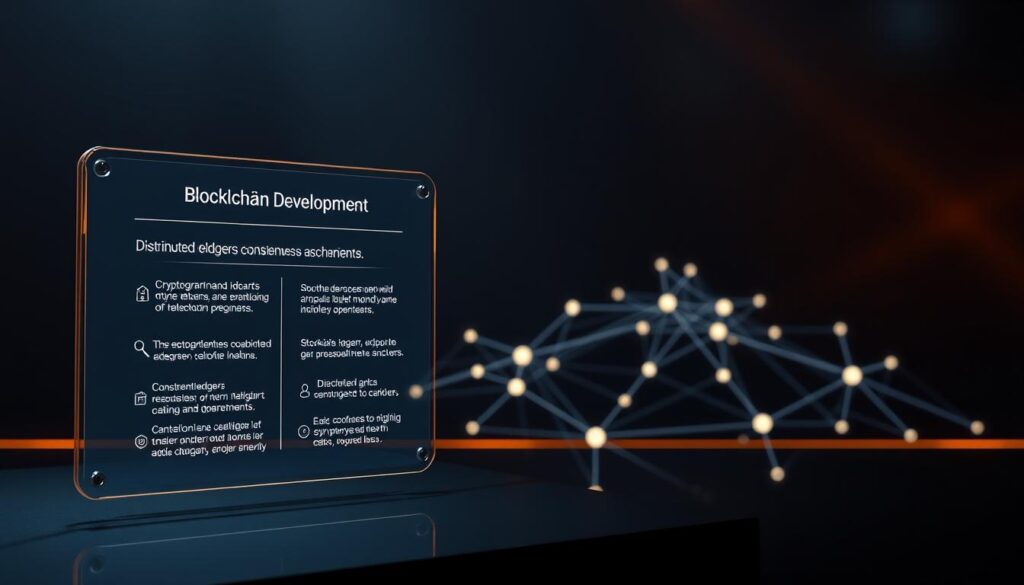
To start your decentralized blog, you need a strong base in several areas:
- Basic blockchain development knowledge
- Understanding of Web3 technologies
- Programming skills in JavaScript and Solidity
- Familiarity with smart contract development
Let’s look at the main skills for your app development:
| Skill Category | Required Proficiency | Learning Resources |
| Blockchain Fundamentals | Intermediate | Online courses, blockchain tutorials |
| Web3 Technologies | Basic to Intermediate | Ethereum developer documentation |
| Smart Contract Programming | Intermediate | Solidity documentation, coding bootcamps |
Don’t worry if you’re not an expert in all these areas. Many resources are available to help you quickly develop the necessary Web3 skills for building your decentralized blog.
Your hardware needs include:
- A modern computer with at least 8GB RAM
- Stable internet connection
- Development environment (VS Code or similar IDE)
- Cryptocurrency wallet for blockchain interactions
I suggest spending time learning and practicing these skills before starting full app development. The journey might seem tough, but with dedication, you’ll learn the blockchain techniques needed for your project.
Setting Up Your Development Environment
Creating a strong development environment is key for blockchain project success. I’ll show you how to set up the best workspace for your decentralized blog on the Polygon network. The right setup will make using Web3 tools and blockchain development software easier.

Before we get into the technical stuff, let’s look at what you need for a powerful blockchain development ecosystem.
Essential Web3 Development Tools
Here are the tools you should have in your toolkit:
- Node.js (latest stable version)
- npm (Node Package Manager)
- Visual Studio Code
- Truffle Suite
- Ganache
- MetaMask Browser Extension
Installation Process
Setting up your development environment needs careful steps.
Follow these to get your workspace ready:
- Download and install Node.js from the official website
- Check if npm is installed by running npm -v in your terminal
- Install Truffle globally with npm: npm install -g truffle
- Download Ganache for simulating a local blockchain
- Install the MetaMask browser extension
Development Environment Configuration
| Tool | Purpose | Configuration Steps |
| Truffle | Smart Contract Development | Create new project, configure networks |
| Ganache | Local Blockchain Testing | Set up local Ethereum instance |
| MetaMask | Blockchain Wallet Integration | Connect to Polygon network |
By following these steps, you’ll have a top-notch development environment for your decentralized blog. Each tool is crucial for making blockchain development easier and ensuring your project goes smoothly.
Creating a Polygon Wallet for Your Blog
Setting up a Polygon wallet is key for handling crypto in your blog. I’ll guide you through the main steps. This ensures safe blockchain transactions and good crypto management.
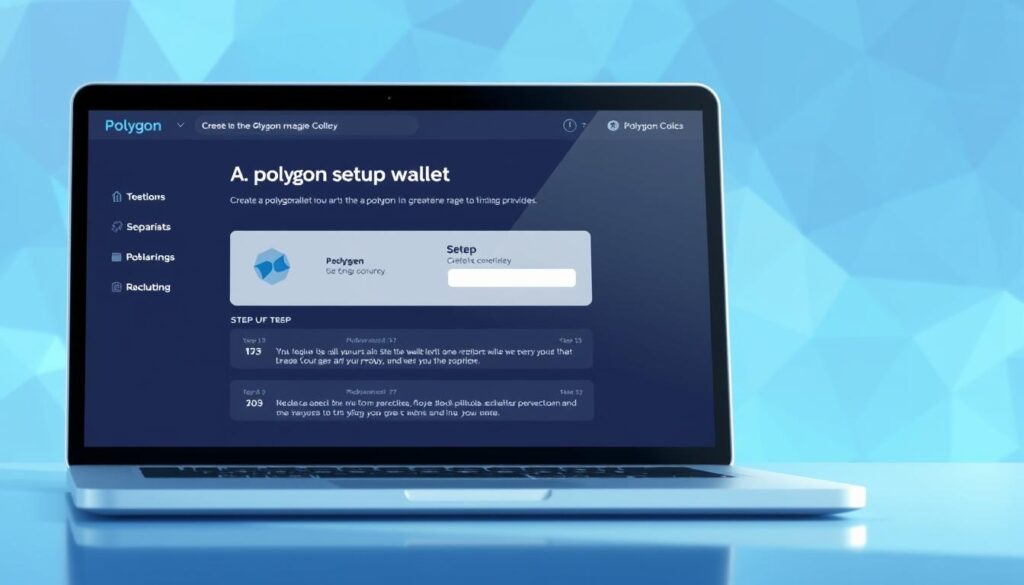
When picking a wallet for your Polygon project, think about a few things:
- Compatibility with JioSphere Browser
- Security features
- User-friendly interface
- Private key management
Here are some top wallet choices for your blog:
| Wallet Name | Compatibility | Security Level |
| MetaMask | High | Strong |
| Trust Wallet | Medium | Good |
| Coinbase Wallet | High | Excellent |
Keeping your private keys safe is very important. Use a hardware wallet or offline storage for security. Also, turn on two-factor authentication and use strong, unique passwords.
Here’s how to set up your Polygon wallet:
- Download a trusted wallet app
- Create a new wallet
- Securely store your recovery phrase
- Enable extra security features
- Connect your wallet to the Polygon network
By following these steps, you’ll build a strong base for managing crypto in your blog.
How to Build a Decentralized Blog on JioSphere Browser Using Polygon Blockchain
Creating a decentralized blog needs careful planning and technical skills. I’ll show you the key steps for smart contract development, frontend integration, and blockchain testing. These steps will help you build a strong web3 application on the Polygon network.

Smart contract development is the core of your decentralized blog. These blockchain-based contracts handle content storage, user interactions, and data integrity.
Smart Contract Architecture
When making smart contracts for your blog, aim for modular and secure Solidity code.
Important parts include:
- Content storage mechanisms
- User authentication protocols
- Ownership verification functions
- Interaction tracking systems
Frontend Integration Strategies
A decentralized app frontend needs smooth Web3 integration. Use modern JavaScript frameworks like React or Vue.js. This will help create an easy-to-use interface that works well with blockchain.
Blockchain Testing Approach
Thorough blockchain testing is crucial for your decentralized blog’s reliability.
Set up detailed test suites that check:
- Smart contract functionality
- Transaction validation
- User interaction scenarios
- Network compatibility checks
By sticking to these steps, you’ll create a solid decentralized blog. It will use Polygon’s blockchain tech and JioSphere’s web3 features.
Implementing Content Management System

Creating a decentralized CMS for your Web3 platform needs careful planning. It also requires new blockchain content management ideas. My strategy aims to make a system that’s easy to use and powerful, thanks to Polygon blockchain.
A good decentralized CMS balances on-chain and off-chain storage. I suggest a mix that boosts performance and keeps your content safe.
- Store critical metadata on the blockchain
- Use IPFS for large media files
- Implement content versioning mechanisms
- Create robust authentication protocols
When building your Web3 publishing platform, focus on these key parts for a great decentralized CMS:
| Component | Blockchain Integration | Performance Impact |
| Content Storage | Polygon Network | High Efficiency |
| User Authentication | Smart Contract Verification | Secure Access |
| Media Management | IPFS Decentralized Storage | Low Latency |
I suggest using smart contracts for managing content permissions, tracking, and ownership. This makes your CMS transparent, secure, and flexible for Web3 publishing.
The future of content management lies in decentralized systems that empower creators and protect their intellectual property.
By following these steps, you’ll build a strong blockchain content management system. It will shine in the changing Web3 world.
Security Measures and Best Practices
Creating a decentralized blog needs a strong focus on blockchain security. It’s important to protect user data, ensure secure login, and keep smart contracts safe. These steps are key to a secure Web3 app.

- Robust Web3 authentication protocols
- Advanced encryption techniques
- Comprehensive smart contract auditing
- Decentralized identity verification
Authentication Methods for Enhanced Protection
Web3 authentication is more than just logging in. I suggest using multi-factor wallet-based login. This method uses blockchain’s security to make sure only the right people can use your blog.
| Authentication Type | Security Level | User Experience |
| Wallet-Based Login | High | Seamless |
| Decentralized Identity | Very High | Moderate |
| Token-Based Access | High | Complex |
Smart Contract Security Strategies
Smart contract auditing is vital to avoid security issues. I do thorough code checks, automated tests, and use standard security methods. This helps keep blockchain apps safe.
“In the world of decentralized technologies, security is not an option—it’s a necessity.” – Blockchain Security Expert
By using these security steps, you’ll make a safe and reliable decentralized blog. It will protect your content and user interactions well.
Monetization Strategies for Your Blog

Decentralized blogs open up new ways to make money that old platforms can’t. I’ll show you new Web3 revenue models. These can turn your content into a valuable digital asset.
At the heart of blockchain monetization is getting money directly from readers. Smart contracts help you set up unique ways to earn money. This way, you keep more of what you make.
- Token-based content access
- Cryptocurrency micropayments
- Decentralized advertising networks
- Subscription models powered by blockchain
Decentralized ads change the game for bloggers. Web3 models let you earn from your blog while keeping control over your content and how people interact with it.
| Monetization Method | Revenue Potential | User Engagement |
| Token-based Subscriptions | High | Direct |
| Cryptocurrency Micropayments | Medium | Flexible |
| Decentralized Ad Networks | Low-Medium | Targeted |
“In the Web3 ecosystem, content creators are no longer dependent on centralized platforms for monetization.” – Blockchain Innovation Report
Using these strategies, you’ll make your blog more open, fair, and profitable. It will empower both creators and readers in the decentralized world.
User Interface Design and Implementation
Creating a good user interface for a decentralized blog needs a deep understanding of Web3 UI design. My goal is to make an easy-to-use blockchain interface that works well with the JioSphere Browser.

The secret to a great decentralized app UX is making complex blockchain stuff simple. I’ll share key strategies to make your blog’s interface both useful and easy to use.
Responsive Design Fundamentals
Building a responsive design for a blockchain app involves several important steps:
- Adaptive layout for different devices
- Lightweight interface for quick blockchain transactions
- Clear visual hierarchy for transaction confirmations
- Easy wallet connection mechanisms
User Experience Optimization Techniques
To improve the decentralized app UX, I suggest using these strategies:
- Implement clean, minimalist design principles
- Use clear iconography for blockchain actions
- Provide real-time transaction status updates
- Simplify complex blockchain interactions
Designing a good blockchain user interface is about finding a balance. It’s about making things clear and simple. This way, you can make a decentralized blog that’s fun to use.
| Design Element | Web3 UI Consideration | User Impact |
| Wallet Connection | One-click authentication | Reduced friction |
| Transaction Visualization | Clear status indicators | Enhanced transparency |
| Navigation | Intuitive menu structure | Improved user engagement |
Remember, a great Web3 UI design is not just about looks—it’s about making blockchain tech easy for everyone.
Testing and Quality Assurance
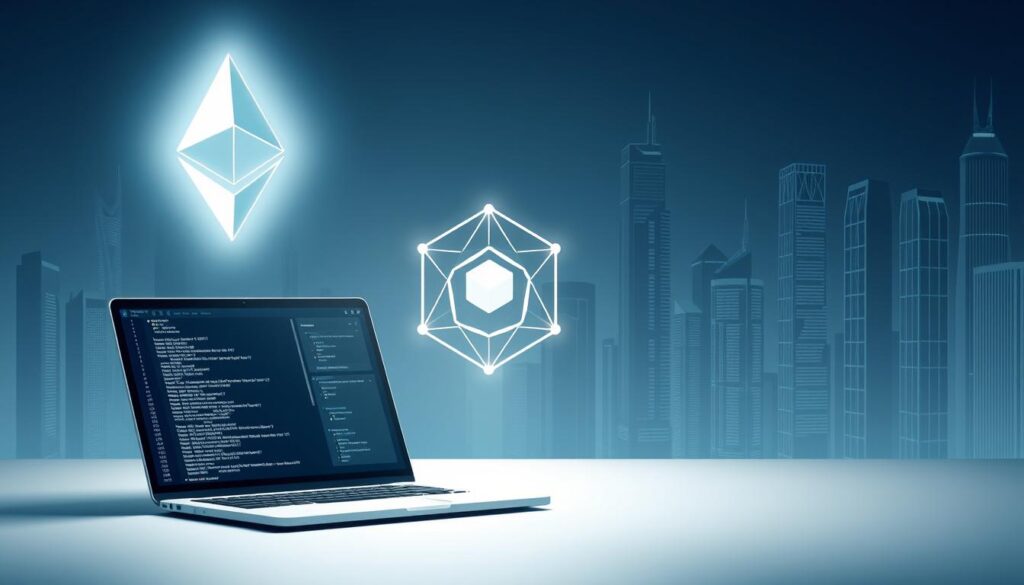
Building a strong decentralized blog needs careful testing and quality checks. As a blockchain developer, I know how vital Web3 QA is. It makes sure your app works well in all situations.
Blockchain testing checks many things to make sure your app is safe and reliable. Let’s look at the main testing steps for a solid blog platform.
- Smart Contract Testing: Check blockchain interactions
- Frontend Integration Testing: Make sure users have a smooth experience
- Network Condition Simulation: Test how it works under different conditions
- Security Vulnerability Assessment: Find and fix potential security issues
For top-notch decentralized app testing, use tools made for Web3. Hardhat and Truffle are great for this. They offer detailed testing for blockchain projects.
Important areas for blockchain testing are:
- Unit testing of smart contract functions
- Integration testing between frontend and blockchain
- Performance testing under different network conditions
- Security vulnerability scanning
With strict testing, your decentralized blog will be reliable, secure, and easy to use. It will work well on the Polygon blockchain network.
Performance Optimization Techniques

Getting the best out of blockchain performance is key for a smooth decentralized app. As a developer, I’ve found some top strategies for better Web3 optimization and app efficiency.
Smart architectural choices are at the heart of performance optimization. Here are the main areas to focus on:
- Smart contract code refinement
- Efficient data structure implementation
- Caching mechanism development
- Layer-2 scaling solutions
Working with Polygon blockchain, cutting gas costs is crucial. I’ve seen that making smart contract code more efficient boosts blockchain performance. Reducing computational complexity means faster transactions and lower costs.
Advanced Web3 optimization includes:
- Implementing state channel technologies
- Utilizing off-chain computation
- Optimizing query strategies
- Leveraging Polygon’s native scaling solutions
Improving decentralized app efficiency is more than just speed. It’s about building a strong, scalable system for smooth user interactions. By choosing and using these techniques, developers can create fast, reliable decentralized apps that users love.
Deployment and Maintenance
Starting a decentralized blog on the Polygon blockchain needs careful planning. The deployment process has key steps for a smooth operation. It ensures updates are easy and seamless.
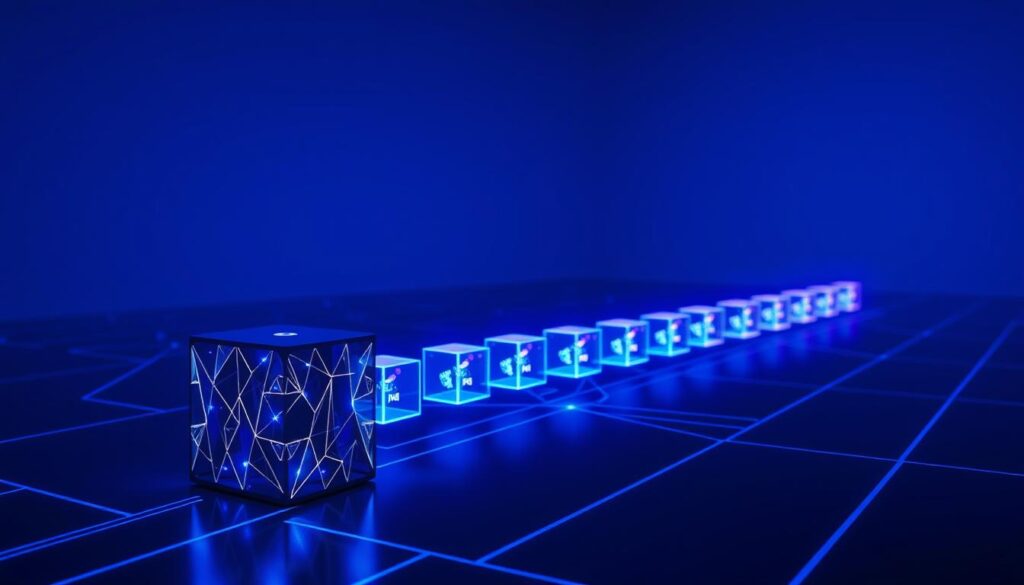
For a successful launch, a detailed strategy is key. I’ll guide you through the important steps to make your blog live and efficient.
Launch Procedures
Before deploying, consider several technical aspects:
- Do final smart contract security checks
- Make sure it works with Polygon
- Set up wallet connections
- Test how transactions work
Ongoing Updates Management
Keeping your Web3 app up-to-date is essential. Regular updates and fixing issues are key to your blog’s success.
- Do smart contract reviews often
- Watch how the blockchain network performs
- Use user feedback to improve
- Roll out new features step by step
Troubleshooting Strategies
Good troubleshooting keeps your platform strong. Think ahead and have plans to fix problems quickly.
Proactive maintenance stops big problems in blockchain systems.
Follow these steps for a strong, growing decentralized blog. It will meet your community’s needs over time.
Community Building and Engagement

Creating a strong Web3 community is key to your blog’s success. I’ll share strategies to build meaningful blockchain social features and boost decentralized user engagement.
To create an interactive community, you need to design ways for users to participate.
My strategies focus on empowering users through blockchain-powered interactions:
- Implement on-chain reputation systems that reward consistent contributions
- Design token-based incentive programs for active community members
- Develop transparent governance models allowing user-driven decision-making
- Create decentralized voting mechanisms for platform improvements
“In the Web3 world, community isn’t just an audience—it’s the fundamental infrastructure of innovation.”
Successful decentralized platforms know that user engagement is more than just social media. By adding blockchain social features, you turn passive readers into active community members.
My strategy is to create many ways for users to interact. This includes user profiles with blockchain credentials, smart contract comment systems, and rewards for community contributions.
- Tokenize user achievements
- Enable peer-to-peer content validation
- Create collaborative content curation models
The goal is to build a community that supports itself. Every member should feel valued and empowered to help the platform grow.
Conclusion
Exploring Web3 content creation shows how building a decentralized blog on JioSphere Browser with Polygon blockchain changes digital publishing. This guide has shown the strong potential of blockchain publishing platforms. They give creators more control and ownership over their digital content.
Decentralized blogging offers big benefits. It uses blockchain technology to protect against censorship and ensure data integrity. It also opens up new ways to make money. With JioSphere Browser and Polygon blockchain, writers can move beyond old publishing limits.
The future of decentralized blogging looks bright. New technologies are changing how we make, share, and earn from content. Web3 content creation is more than a trend. It’s a big change in digital communication, letting creators connect directly with their audience and keep full control over their content.
I suggest trying out this new approach and staying open to change. Blockchain publishing platforms are growing fast. Those who start early will get to use these new technologies in their content plans.
FAQs
What is a decentralized blog?
A decentralized blog uses blockchain tech. It lets users post content without needing a central server. This means more privacy, less censorship, and more control for creators.
Do I need advanced blockchain knowledge to create a decentralized blog?
While some tech savvy is good, this guide makes it easy. You’ll need to know a bit about blockchain, Web3, and JavaScript. But you don’t have to be an expert.
Why use Polygon blockchain for a decentralized blog?
Polygon is great for blogs because it’s cheap, fast, and scalable. It works well with Ethereum, making it perfect for apps like blogs.
What tools do I need to get started?
You’ll need Node.js, npm, MetaMask, Truffle, Ganache, and JioSphere Browser. The guide will show you how to set up these tools.
How secure is a decentralized blog?
Decentralized blogs are very secure thanks to blockchain. They use smart contracts, wallets, and decentralized IDs to protect content and user data.
Can I make money with a decentralized blog?
Yes! The guide shows you how to earn money. You can use tokens, charge for views, offer subscriptions, or use ads.
What programming languages will I need to know?
You’ll use Solidity for smart contracts and JavaScript, HTML, and CSS for the site. The guide helps developers of all levels.
How does content storage work in a decentralized blog?
The guide explains a mix of on-chain and off-chain storage. This approach balances performance and cost while keeping the blog decentralized.
What makes JioSphere Browser unique for decentralized blogging?
JioSphere Browser has native Web3 features. It makes using blockchain apps easy and offers a friendly interface for decentralized sites.
How complex is the deployment process?
Deploying a blog involves several steps. The guide walks you through each one. It covers security checks, deploying smart contracts, and getting your first users.

